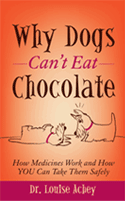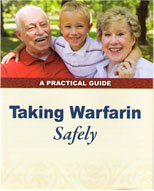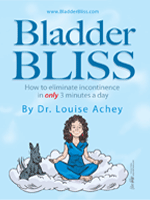Are Your Pills Making You Sick?
Q: I think my pills are making me sick. Is there anything I can do to avoid this? If I throw up right after I take them, should I try again?
You are not alone. As a pharmacist, one of the most common complaints I hear is, “These pills make me sick!” They’re right. Queasiness, cramping of your stomach or intestines – what doctors call “gastrointestinal distress”, or “GI distress” – is the most commonly reported side effect reported with medicines. In fact, either nausea or GI distress has been reported with every single prescription medicine.
If there were a Hall of Fame of drugs that cause nausea and vomiting, the medicines most likely to be in there would be antibiotics, pain medicines, and cancer chemotherapy drugs. Here are some tips to help reduce the GI distress and risk of vomiting from these and other medicines:
Tip #1: Take your medicine with food in your stomach or a full glass of water or milk. Taking it just after finishing your meal instead of at the beginning of it is even better, as there is more food in your stomach to dilute out any distressing effects on your innards.
Tip #2: If an antibiotic is causing nausea or vomiting, ignore any advice about taking the medicine on an empty stomach (gasp!) and take it with crackers or a snack, but not a full meal. Don’t worry, your stomach won’t blow up! You’ll lose a little of the antibiotic because of the food, but it’s much better to get most of your medicine inside you than to upchuck the whole thing before it even has a chance. If you try this and it still doesn’t help, contact your doctor as soon as possible. An antibiotic can’t help you if you can’t keep it down, and delaying treatment can lead to serious consequences.
Tip #3: Take the medicine at night, so you sleep through the queasiness. This is helpful with oral contraceptives or with prenatal vitamins because “morning sickness” during the first trimester of pregnancy can make it challenging to keep food and vitamins down. It can also be helpful with pain medicines.
Tip #4: Ask your pharmacist if there is a delayed-release or specially coated formulation designed to minimize stomach distress that can be requested from your doctor.
Tip #5: Ask your pharmacist if you could safely split your pills into more than one dose and take them several hours apart, like with breakfast and dinner. Some pills can be split safely; others need to be switched to a smaller size pill and given in separate doses.
Chemotherapy drugs top the list of drugs that cause severe queasiness and vomiting. You’re more likely to experience nausea or vomiting during chemotherapy if you are younger than 50 years old, are female, have had nausea during a pregnancy, are prone to motion sickness, or have had nausea during previous chemotherapy. Depending on the treatment regimen, multiple anti-nausea medicines are used together, including pills, dissolving or melt-in-your-mouth tablets, skin patches, rectal suppositories, and injections.
Tip #6: Anti-nausea medicine works best when taken ahead of time. If you’re planning to go salmon fishing on a charter out of Westport, it’s best to take your motion sickness medicine at least 30 minutes before boarding the boat, not when you realize you’re about to heave your breakfast over the side.
If you do vomit after taking your medicine, what should you do? If it’s an antibiotic or pain medicine, go ahead and try it again, but make sure you’re taking it with food and a full glass of fluid. If you end up losing your medicine a second time within 30 minutes, contact your doctor, because if you can’t keep your antibiotic or your pain medicine down, it won’t be able to help you.
If it’s been more than 30 minutes since you took your medicine, then you may have gotten just enough medicine absorbed that taking another dose right away could be an overdose. If your medicine is for your heart, your blood pressure, or anxiety, contact your doctor or pharmacist first before repeating the dose.



